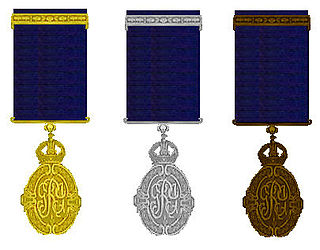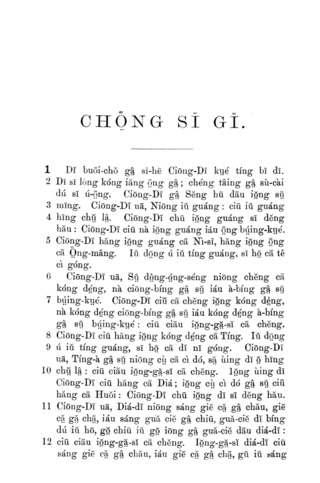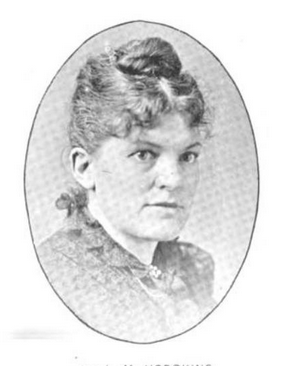Related Research Articles
The Church Mission Society (CMS), formerly known as the Church Missionary Society, is a British Anglican mission society working with Christians around the world. Founded in 1799, CMS has attracted over nine thousand men and women to serve as mission partners during its 200-year history. The society has also given its name "CMS" to a number of daughter organisations around the world, including Australia and New Zealand, which have now become independent.

The Kaisar-i-Hind Medal for Public Service in India was a medal awarded by the Emperor/Empress of India between 1900 and 1947, to "any person without distinction of race, occupation, position, or sex ... who shall have distinguished himself by important and useful service in the advancement of the public interest in India."
The Church of England Zenana Missionary Society, also known as the Church of England Zenana Mission, was a British Anglican missionary society established to spread Christianity in India. It would later expand its Christian missionary work into Japan and Qing Dynasty China. In 1957 it was absorbed into the Church Missionary Society (CMS).
The International Service Fellowship, more commonly known as Interserve, is an interdenominational Protestant Christian charity which was founded in London in 1852. For many years it was known as the Zenana Bible and Medical Missionary Society and it was run entirely by women.
Robert Clark (1825–1900), and his colleague Thomas Henry Fitzpatrick, were the first English Church Mission Society (CMS) missionaries in the Punjab. Clark was the first missionary to the Afghans, and was the first agent of the Church to enter the city of Leh.

Hillwood College is an independent private girls' school in Kandy, Sri Lanka founded by British Anglican missionaries of the Church of England Zenana Missionary Society in 1890. The school is situated in the Kandy Lake round. The school is managed by the Church of Ceylon and falls under the Diocese of Kurunegala.

The Kienning Colloquial Romanized Alphabet is a romanization system adopted by Western missionaries to compile the Kienning dialect of the Northern Min language in the Fujian Province of China.

The zenana missions were outreach programmes established in British India with the aim of converting women to Christianity. From the mid 19th century, they sent female missionaries into the homes of Indian women, including the private areas of houses - known as zenana - that male visitors were not allowed to see. Gradually these missions expanded from purely evangelical work to providing medical and education services. Hospitals and schools established by these missions are still active, making the zenana missions an important part of the history of Christianity in India.

Katherine Watney was a British-born missionary nurse in China.
Woman's Union Missionary Society of America for Heathen Lands was an American Christian mission organization. Established in 1861, its headquarters were at 41 Bible House, Astor Place, New York City. The first meeting called to consider organizing a society was gathered in a private parlor in New York City on January 9, 1861, and addressed by a returned missionary from Burma. At a subsequent meeting on January 10, the organization was effected, with Sarah Platt Doremus as president. The society's object was to "send out and maintain single women as Bible-readers and teachers, and to raise up native female laborers in heathen lands".

Ann Small or Ann Hunter "Annie" Small was a Scottish missionary to India and a Scottish educationist who trained women to work in Christian missions.

Louise Manning Hodgkins was an American educator, author, and editor from Massachusetts. After completing her studies at Pennington Seminary and Wilbraham Wesleyan Academy, she became a teacher and preceptress at Lawrence College, before receiving a Master of Arts degree from that institution in 1876. She taught at Wellesley College for over a decade before turning her attentions to writing and editing. Her main works included Nineteenth Century Authors of Great Britain and the United States, Study of the English Language, and Via Christi. She served as editor of The Heathen Woman's Friend, the first organ of the Woman's Foreign Missionary Society of the Methodist Episcopal Church, and also edited Milton lyrics : L'allegro, Il penseroso, Comus, and Lycidas and Matthew Arnold's Sohrab and Rustum. She died in 1935.
John Fordyce (1819–1902) was a Christian missionary, evangelical minister and administrator who launched the female education initiative in India known as the Zenana Missions. He has been credited with introducing the rickshaw to India.

Margaret Brown (1887–1978) was a Canadian nurse and author who worked in clinics in China, created schools for girls and women, taught Chinese nurses, built houses, did religious missionary work, and worked for the Christian Literature Society in Shanghai. She also founded The Women’s Star magazine.
Mary Ronald Bisset was a physician and missionary. After she received her medical degrees, she went to Bhiwani, Punjab, India, where she was a medical missionary. She provided care to girls and women and helped establish a hospital for women in Bhiwani. She treated patients during epidemics and sought to reduce the mortality rate during childbirth. In 1931, she was awarded the Kaisar-i-Hind Medal for Public Service in India.
Hopestill Harland Pillow was a Baptist missionary to India.
Kheroth Mohini Bose, ਖੇਰੋਥ ਮੋਹਿਨੀ ਬੋਸ was an Indian physician and Christian missionary who operated in the community of Asrapur, India. She was a member of the Church of England Zenana Missionary Society.

Mary Reed (1854–1943) was an American Christian missionary to India. For the first ten years of her career, she worked as a school teacher in her home state of Ohio. In 1884, she went to India as a missionary of the Cincinnati Branch of the Woman's Foreign Missionary Society of the Methodist Episcopal Church, and entered upon zenana missions work at Cawnpore. In 1890, she became conscious of a strange physical disability, and thinking that her health was failing, returned to the U.S. on a furlough. While recovering in Cincinnati came the dread suspicion and subsequent discovery that the malady was leprosy. At first, she was overwhelmed with the realization, but she quickly decided to give her life to work among the lepers in India, and her thoughts turned to Pithoragarh, among the foothills of the Himalayas, at the base of Chandag Heights, where a group of lepers lived in whom she had already become interested. Her suspicions as to the nature of her disease were confirmed by every specialist she consulted. She kept the diagnosis a secret, however, from her family, with the exception of one sister, and returned to India in 1891. Proceeding to Pithoragarh, Reed informed her family and friends by letter of her purpose, and her reason for choosing this service. Thereafter, she conducted her important work at Chandag, and built up an institution which in many respects was a model of order and well-arranged facilities. Reed continued to work among the lepers of India until her death in 1943. She was a recipient of the Kaisar-i-Hind Medal.
Beatrice Marian Smyth (1894-1965) was an American physician and missionary who was a member of the Church of England Zenana Missionary Society (CEZMS). Smyth was in charge of the CEZMS mission in Rainawari, a locality in Srinagar City in Jammu and Kashmir state, India. She led the opening of the Elizabeth Newman Hospital in January 1937, and started a training school for nurses in Kashmir.
References
- 1 2 3 4 "Missionaries blue packets - 1884-1960 Records of the CEZMS Cadbury Research Library at University of Birmingham".
- ↑ "The Church of England Zenana Missionary Society Jubilee Souvenir 1880 -1930". Internet Archive. London 1930. Retrieved 23 March 2022.
- 1 2 3 4 5 D, A (1912). Until the shadows flee away: The story of C.E.Z.M.S. work in India and Ceylon. London: Church of England Zenana Missionary Society: Marshall Brothers. pp. 108–110.
- ↑ "India's Women and China's Daughters September 1915 Volume 35 Issue 351 London CEZMS. Available through Adam Matthew, Marlborough". Church Missionary Society Periodicals. Retrieved 15 August 2021.
- ↑ "India's Women and China's Daughters July 1939 Volume 59, Issue 630, 1939. London CEZMS. Available through Adam Matthew, Marlborough". Church Missionary Society Periodicals. Retrieved 15 August 2021.
- 1 2 3 A Tale of modern Sind. Cadbury Research Library, University of Birmingham: CEZMS. 1925–1933.
- ↑ Blanche, Brenton Carey (March 1920). "Walls Rising". India's Women and China's Daughters. 40 (401): 41.
- ↑ "The Sindh Mission Karachi". India's Women. 15 (110): 352. August 1895.
- 1 2 3 4 Bose, Zoe (1936). "Jubilee Day in Karachi". India's Women and China's Daughters. 56 (589): 23.
- 1 2 3 4 5 Condon, Miss (July–August 1886). "Miss Condon's Report". India's Women. 6 (34): 185.
- 1 2 Blanche, Breton Carey (March 1913). "Itinerating around Karachi". India's Women and China's Daughters. 33 (321): 52.
- ↑ United Kingdom 1861 Census
- 1 2 "The Elizabethan June 1900 Vol.11 No.5 p102". The Roy Honey Digital Archives. Elizabeth College. Retrieved 24 March 2022.
- ↑ "The Echoes from the Harp of France Harriet M Carey 1860". Internet Archive. London 1930. 1860. Retrieved 24 March 2022.
- ↑ Raikes, Henry (1855). Memoir of Vice Admiral Sir Jahleel Brenton Baronet K.C.B. London: Longman and Co. Ryde: Briddon. p. CXXV.
- ↑ Burke, Bernard (1882). Burke's Genealogical and Heraldic History of the Landed Gentry page 271 . Retrieved 24 March 2022.
- ↑ Oakland Tribute, California (17 May 1921). "Captain Brenton of British Navy Dead". Newspaper.com. Retrieved 23 March 2022.
- 1 2 "Leaving Taking". India's Women. 5 (30): 329. November–December 1885. Retrieved 24 March 2022.
- 1 2 3 Condon, Miss (July–August 1887). "Miss Condon's Report". India's Women. 7 (40): 205–206. Retrieved 22 March 2022.
- 1 2 "Our Valedictory Meeting". India's Women. 13: 492. 1893.
- ↑ "Progress at Karachi, Sindh". India's Women and China's Daughters. 27 (257): 171. 1907.
- 1 2 "A Widow's Industrial Class". India's Women and China's Daughters. 34 (335): 84. 1914.
- ↑ "Walls Finished". India's Women and China's Daughters. 41 (418). October 1921.
- ↑ "The Church of England Zenana Missionary Society Jubilee Souvenir 1880 - 1930 page 16". Internet Archive. London 1930. Retrieved 23 March 2022.
- ↑ "Progress at Karachi, Sindh". India's Women and China's Daughter. 27 (257): 170. 1907.
- 1 2 Dr Ansari, Sohail (19 July 2020). "Heritage: Civil Hospital Karachi How It Came To Be". Dawn.com. Dawn. Retrieved 23 March 2022.
- ↑ "Officers washing members of the Nusserpuri camp, set up as part of the Karachi Plague Committee, India. Photograph, 1897". Wellcome Collection. Retrieved 23 March 2022.
- ↑ Nathan, R. "Plague in India 1896, 1897". National Library of Scotland. SIMLA: Government Central Printing Office 1898. Retrieved 24 March 2022.
- ↑ Brenton Carey, Blanche (July–August 1888). "Miss Carey's Report". India's Women. 8 (46): 214. Retrieved 22 March 2022.
- ↑ "October India's Women and China's Daughters, Volume 41, Issue 418. 1921. London CEZMS. Available through Adam Matthew, Marlborough, CMS Periodicals" . Retrieved 14 August 2021.
- ↑ "July India's Women and China's Daughters, Volume 48, Issue 498. Image 124. 1928. London CEZMS. Available through Adam Matthew, Marlborough, CMS Periodicals" . Retrieved 14 August 2021.
- ↑ Davidson, Catherine (November 1907). "Karachi". India's Women and China's Daughters. 27 (257): 102.
- 1 2 3 4 5 6 7 8 "Correspondence with missions 1927-1930. Records of the CEZMS at Cadbury Research Library, University of Birmingham CEZ C AC1/I2".
- ↑ "RIOT IN KARACHI". The Sydney Morning Herald . No. 30, 333. New South Wales, Australia. 23 March 1935. p. 16. Retrieved 24 March 2022– via National Library of Australia.
- 1 2 3 4 5 "Correspondence relating to deaths of missionaries Records of the CEZMS at Cadbury Research Library, University of Birmingham".
- ↑ "Looking East May 1952 Vol. 72 Issue 3, Images 39,40". Church Missionary Society Periodicals. © [2021] Adam Matthew Digital Limited. Retrieved 14 August 2021.
- ↑ "UoB Calmview5: Search results". calmview.bham.ac.uk. Retrieved 22 January 2021.
- ↑ "Church Missionary Society archive". amdigital.co.uk.